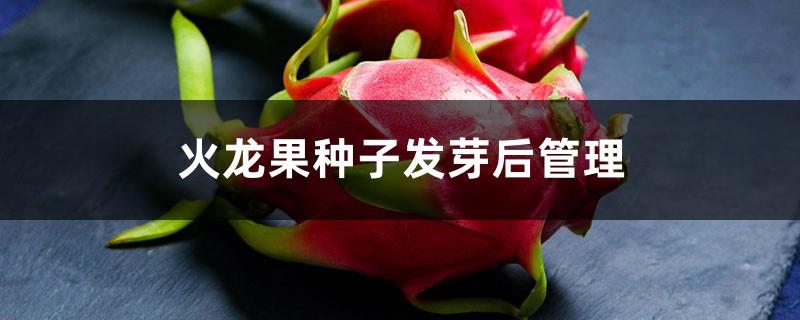Management of dragon fruit seeds after germination
Last Update :2024.12.24
Article Catalog
After dragon fruit seeds germinate, they need to be properly managed before they can bloom and bear fruit. During the seedling stage, diffuse light should be provided, but as it grows, the light should gradually increase. The temperature is controlled at around 25-35℃, which is conducive to its growth. The water supply should be sufficient to keep the soil moist and accelerate the growth of the root system. Apply nitrogen fertilizer in the early stage and phosphorus and potassium fertilizer in the later stage to promote plant development.

1. Proper lighting
1. Appropriate light
Dragon fruit is suitable for growing in an environment with sufficient light, but the seedling stage should not be exposed to direct light and requires appropriate shade. As the plant grows, the light can be slowly increased.

2. Suitable temperature
As a tropical plant, dragon fruit has higher temperature requirements. It is suitable for growing in an environment of 25-35℃, and can also withstand high temperatures of 40℃. If the temperature is not up to standard, its growth will slow down.

3. Sufficient water
Dragon fruit in the seedling stage has a high demand for water. Keep the pot soil moist at all times, especially in spring and summer, water more often to promote root growth. There should also be sufficient moisture after fruiting so that the fruit can expand. It should be noted that there should be no accumulated water in the pot soil, otherwise it will cause root rot.

4. Moderate fertilization
To promote the development of the seedling, you need to give it a little fertilizer. The concentration of fertilizer should not be too heavy to avoid affecting its development. The initial fertilizer is mainly nitrogen, which can make it grow faster. But after it grows up, it should be mainly fed with phosphorus and potassium fertilizer, otherwise it will cause it to grow leggy.
2. Suitable temperature
3. Adequate moisture
4. Appropriate fertilization
- END -
How to grow red-leaf nandina

Soil: Nandina prefers deep, fertile, loose soil. Light: It likes a humid environme...
How to differentiate between American Dianthus and Chinese Dianthus

The stems are different: The stems of American Dianthus are smooth and thin. The s...